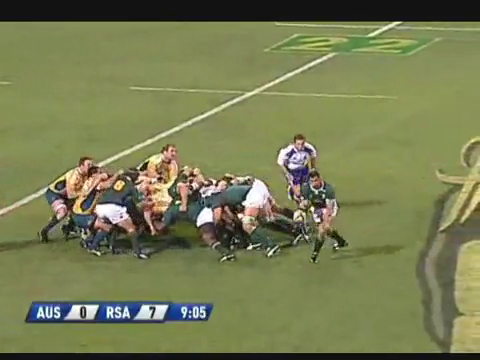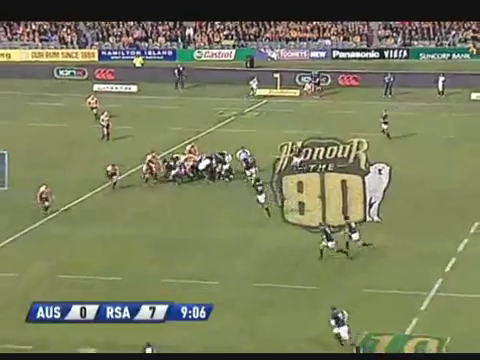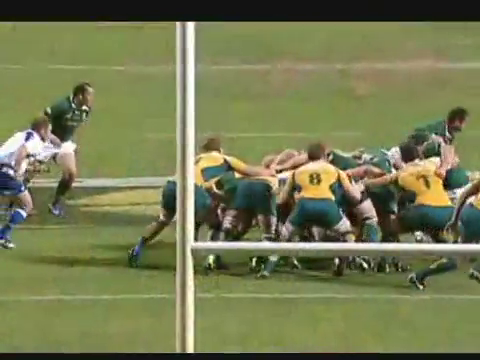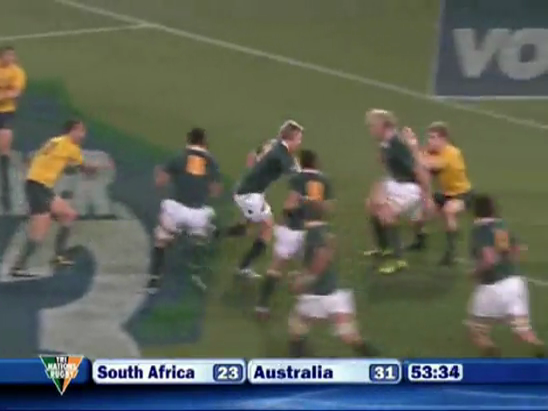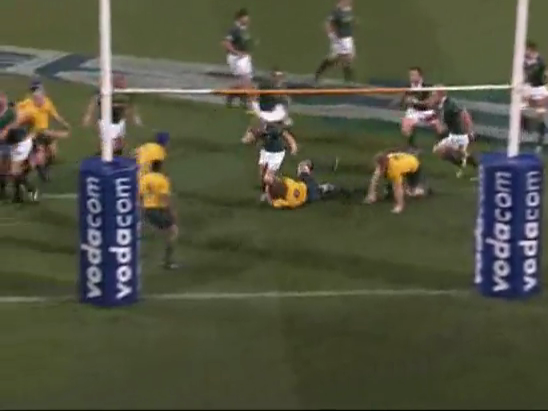Run at the referee is an old trick and usually quite effective.
Since I generally referee by myself without mic'ed up AR's I stay in the attacking side or just behind. It seems to work pretty well for me and gives me a good chance to see all that is going on in the backlines.
I note certain referees still go stand in that hole even after years of refereeing.
Other ones I picked up and this is todays flankers and their added job description these days. I used some examples of my own country for safety reasons.
Let me explain firstly how defensive systems work especially one like Australia. They like most teams use the In-out drift. The way the line drifts is not important to understand here but the cover coming across trying to cut you off. The 9 is used as a sweeper and he will run behind the line and if someone gets through will cover as the 2nd line. I am certain you all have seen all the times legend Georgy Gregan came across to make all those tackles from Wilson to Lomu. It was a great trademark of him.
Now this is the South African try from Perth 2009 scored by Jacque Fourie he went through untouched. Its a brilliant try if one is ball watching but it was actually clever orchestrated.
Look at the scrum the South African 6 holding on to the Aussie flanker.
As you can see the Aussie defenders start drifting but watch the 9. He is suppose to run back and across behind his line but he is not but actually moving forward. The slight wheel made the 8 not seeing play. When Spies broke at the back of the scrum the Aussie flanker wasn't going for him where the 9 had to commit rather than drift. Because that is happening the the angle back created a hole.
Here you can see 8 not actually seeing whats going on and 7 can't go for Spies as he was being held back by the SA 6.
There goes Fourie untouched and as you can see the 9 chasing dust there where he should have been in position to make the tackle on Fourie. Simple off the ball holding Rugby league style created that
Here is another one.
De Villiers coming back at the angle. Look at how cleverly Burger is blocking Pocock from making that tackle and being unsighted.
As you can see Pocock falling over trying to get rid of Burger where it was too late and De Villiers smashed over for a try.
You see this becoming a fashion in rugby and I knew it won't be long before someone starts complaining and Wayne Smith wrote a article about saying its going to mess up his stats.
I know its hard for referees to see it and I don't think a TMO would pick it up either as like most they are ball watching. You think referees should be trained in defensive systems and off the ball tactics or should we just turn a blind eye?










